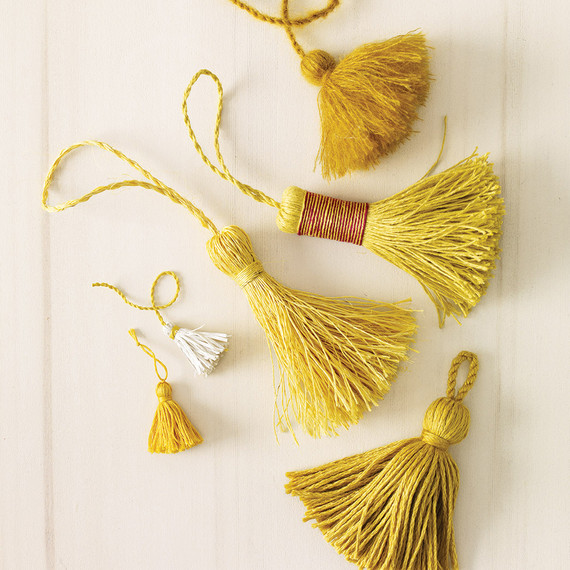

They’re fancy, if not a little superfluous, right?
Yes, the tassels of today are typically regarded as traditional embellishments for the home (think: your grandma’s rich brocade curtains, pillows, and lampshades). But the tide is turning in favor of these dangling decorations. As a matter of fact, tassel jewelry is the must-try trend of the season. (See host Erin Furey craft her own in this episode of “DIY Style,” below.)
You see them all over the place: hanging off of handbags, jackets, and the tops of smoking slippers. There’s no doubt that fashion designers are incorporating them into their fall collections because of their luxe legacy.
The tassel has almost always been a symbol of power and prestige. The word for “tassel” originated from “tassau” — which, translated from Latin, refers to a clasp at the neck of a garment. In the beginning, tassels served as a weaving knot in garments to prevent unraveling. Then, over the course of time, they took on a more powerful significance: They were worn by ancient priests and military officers as talismans that warded off evil spirits. Egyptian pharaoh Tutankhamun was unearthed from his tomb wearing them around his neck.
In 330 AD, Roman emperor Constantine decreed that all Christians should be clothed, leading to a high demand for tassel trimmings. Flash-forward to 540 AD: Emperor Justinian and two Persian monks smuggled in silkworms from China — just to make the tassels fancied by royalty and aristocrats in the Western world.
We can thank the French for turning the tassel into a trendsetter. Around the 16th century, the Guild of the Passementiers established the art of “passementerie.” It took seven years of apprenticeship to be trained in this craft, and a single tassel would cost the equivalent of thousands of dollars to commission, not to mention weeks of labor and valuable materials. (Can you imagine how long it might take to weave the trimmings for an entire throne?!)
Scholars from Oxford and Cambridge affixed them to their graduation caps to mark their intellectual superiority. The church tied them to robes to denote rank among clergy members. Napoleon decked out his imperial throne with them. King Louis XIV even commissioned them to decorate all royal costumes and residences. Shortly after that, the rest of the Western world followed suit by adding them to, well, everything and anything. They inspire us to feel smart, strong, even statuesque.
Tackle the Tassel Trend
Feeling inspired? Braid one for a budget-friendly necklace. Better yet, why stop there? Tassels make beautiful swinging embellishments for a pair of earrings or a set of bangle bracelets. As for the tassels themselves, feel free to play with different shapes and materials: leather fringes, richly colored beads, and embroidered thread. They’re fringy, they’re fun, and they’re totally on trend. Swing one around your neck, and get ready to shine like a queen.
SOURCE:http://www.marthastewart.com/1082099/decorative-past-how-tassels-changed-history